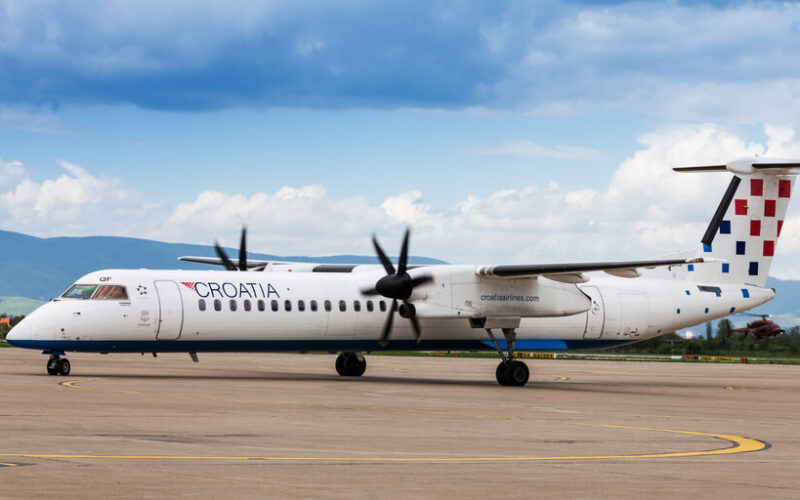The national flag carrier of the Adriatic country, Croatia Airlines, has received a substantial amount of money from the Croatian government. The first injection, which amounts to $14.7 million (HRK100 million) will be followed up by another $22 million (HRK150 million) injection. The move comes as a neighboring airline, Adria Airways, is on the brink of collapse – but the situation at Croatia Airlines is considerably better.
The Finance minister of Croatia, Zdravko Marić, has indicated that the flag carrier has a vital role in tourism as it connects “Croatia with other destinations”, as reported by The Voice of Croatia. The country’s Prime Minister, Andrej Plenković, has also noted that the airline is “important” for Croatian tourism and he expects that the carrier would be “financially ready to make new forwards strides”.
The possible failure of Adria Airways would create a capacity gap in the region. If Adria were to close its doors for good, the carrier would open up vital slots connecting Slovenia and several German cities, including major European hubs in Frankfurt and Munich. Thus, the aforementioned “forward strides” could be potentially overtaking Adria’s routes.
German tourism is vital to the region – out of the total 18.6 million tourists that arrived in Croatia, 16.7% were from Germany, according to data published by the Croatian Ministry of Tourism. In addition, the tourism sector accounts for 20% of Croatian GDP. Meanwhile in Slovenia, out of the total 5.9 million tourists, Germany accounts for 11.4% of travelers. Sustaining connectivity between the two countries and Germany is a must for the local economies.
Croatia Airlines sustaining and subsequently creating even more capacity in the region, with Zagreb Franjo Tudman Airport (ZAG) becoming a hub to transfer tourists within the Balkans is a possibility. This might be the goal of the latest financial help from the authorities. The Croatian government believes “that not only Croatia Airlines, but all airports in Croatia, have massive potential”, according to Marić.
The Zagreb-based carried has a more stable foundation than Adria. Croatia Airlines managed to achieve profit in 2016 and in 2017, as the final line in the financial report stated a net gain of $1.1 million (HRK8 million) and $1 million (HRK7.3 million), respectively. In 2018, however, the airline slowed down – the financial report went red with a net loss of $12.2 million (HRK82.9 million). Adria has been a trainwreck for quite some time, as its last profit in 2016 was due to the fact that the company sold its shares and brand rights to a new shareholder.
But whether Croatia Airlines will manage to grow is questionable. Just like Adria, the carrier is stuck between a rock and a hard place. Lufthansa Group’s commercial and operational might and the fact that Air Serbia, which is backed by Etihad, is already offering extra flights to former Adria Airways destinations which indicates that the competition will be intense.
ARTICLE:

